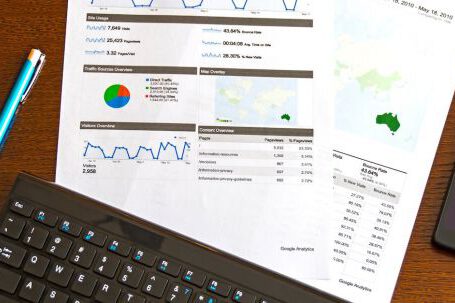When it comes to creating a business plan, financial projections are an essential component. These projections provide a clear picture of the financial future of your business, helping you make informed decisions and attract investors. In this article, we will explore the steps involved in calculating financial projections for your business plan.
1. Start with a sales forecast
The first step in calculating financial projections is to create a sales forecast. This forecast estimates the amount of revenue your business expects to generate over a specific period. To create an accurate sales forecast, consider factors such as market demand, competition, and pricing strategies. By analyzing historical data and market trends, you can make reasonable sales projections for your business plan.
2. Determine your costs
To calculate financial projections, you need to determine the costs associated with running your business. These costs can include expenses such as labor, materials, rent, utilities, and marketing. It is essential to be realistic and thorough when estimating these costs to ensure your projections are accurate. Consider both fixed costs (those that remain constant) and variable costs (those that fluctuate based on sales volume).
3. Calculate gross profit margin
Gross profit margin is a crucial financial metric that indicates the profitability of your products or services. It represents the difference between your sales revenue and the cost of goods sold (COGS). To calculate the gross profit margin, subtract the COGS from the sales revenue and divide the result by the sales revenue. This percentage will give you an idea of how much profit you are making on each sale.
4. Project your operating expenses
Operating expenses include all the costs incurred in running your business, excluding the cost of goods sold. These expenses can include salaries, rent, utilities, marketing, and administrative costs. To project your operating expenses, consider historical data, industry benchmarks, and any anticipated changes in costs. It is essential to be realistic and factor in potential fluctuations in expenses.
5. Estimate your net profit
Net profit is the amount of money your business earns after deducting all expenses from the revenue. It represents the overall profitability of your business. To estimate your net profit, subtract the operating expenses from the gross profit margin. This will give you a clear picture of the financial health of your business and help you identify areas for improvement.
6. Consider cash flow
Cash flow is another critical aspect of financial projections. It refers to the movement of money in and out of your business. A positive cash flow indicates that your business is generating more cash than it is spending, while a negative cash flow may suggest financial challenges. Consider factors such as accounts receivable, accounts payable, and inventory turnover when projecting your cash flow.
7. Review and refine your projections
Once you have calculated your financial projections, it is essential to review and refine them regularly. As your business evolves and market conditions change, your projections may need adjustments. Regularly monitor your financial performance and compare it to your projections to identify any discrepancies or areas for improvement.
In conclusion, calculating financial projections for your business plan is a crucial step in creating a roadmap for success. By estimating sales, determining costs, calculating profit margins, projecting expenses, and considering cash flow, you can create accurate and realistic financial projections. Regularly reviewing and refining these projections will help you make informed decisions and steer your business in the right direction.





